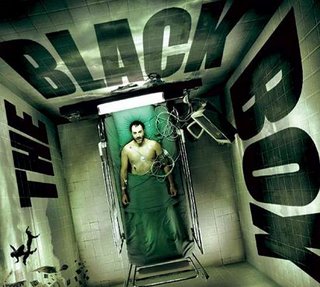I'm pulling a few sentences from the newspaper article to use as a springboard for discussion:
They said Sparrow told a nurse practitioner she was considering using sedatives to kill herself, her daughter and her dog, but that medical professional did not contact the authorities or otherwise try to get Sparrow committed to a psychiatric hospital.
After hearing Sparrow had just stopped taking the antidepressant Prozac for fear it was causing the suicidal thoughts, the nurse practitioner let her go home with the instruction to come back if she didn't feel better...
I was struck by two things in the recounting of the story as I read it: that both the patient and the nurse practitioner thought her suicidal thoughts came from the Prozac (and both, perhaps, trusted they would stop with the cessation of the medicine--- obviously I don't know that's what they thought, but it's implied in this particular recounting of the story), and that a homicidal mother was apparently allowed to leave a clinic without being evaluated by a psychiatrist, I think. So my comments are general, because I don't trust a press account to be all-inclusive, and perhaps things transpired that didn't make it in to print.When Prozac first came on the market, there were some concerns that it made people suicidal, and these concerns were dismissed. With years (oh, more than a decade) researchers revisited this idea and concluded that people under the age of 26 have a low incidence (1-2%) of violent thoughts caused by anti-depressants, and so we have the Black Box Warning about such thoughts. Does all the publicity about how the possibility of suicidal thoughts can arise from the medications narrow peoples' thinking? If we think a medication has caused a suicidal idea, does this prevent people from exploring other options? Perhaps the medication isn't working, or perhaps the depression has gotten worse and has broken through. Perhaps something else has transpired that increases risk. And if the medication is the culprit, what do we know about how long one has to be off it before such violent thoughts stop and the risk is gone? I think the answer is that we don't know.
I don't know if the woman described above saw a doctor the day she was in the clinic, or what exactly she said to the nurse practitioner. I don't know if the outcome would have been any different if she'd been committed to a psychiatric facility. What I do know is that when any story has a tragic ending, it's hard to wonder if more couldn't have been done.
We pass so-called scope-of-practice laws--- should psychologists prescribe? Should nurse-practitioners practice essentially independently? The fuss goes into the legislative battles before-the-fact, one fought primarily by legislators and lobbyists, not clinicians. We don't generally look backwards and ask if poor outcomes are more more likely to occur in settings where we've dropped our standards and we don't seem to ever ask if we should revoke those decisions. I'm not saying we should--- but perhaps we should ask more questions.







